A well-designed bedroom can be a space of tranquility that ensures high-quality sleep and well-being.
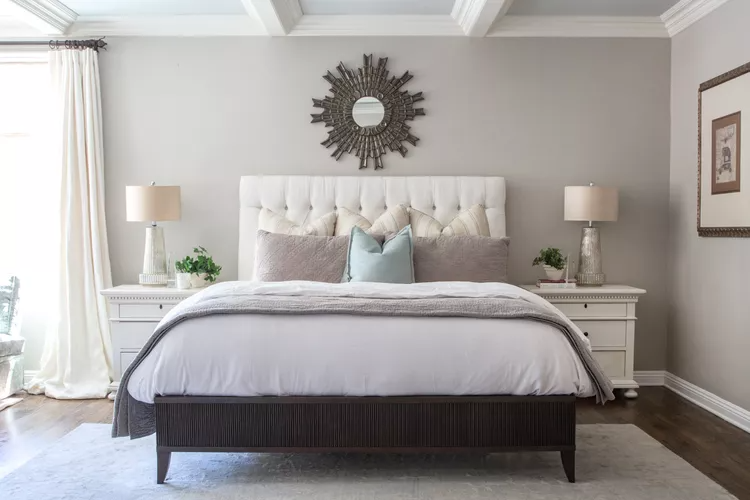
Your bedroom is more than just a place to lay your head at night. A well-designed bedroom can be a space of tranquility that ensures optimal rest and sleep. And that’s a good thing because research has found a direct correlation between consistent, high-quality sleep and improved cognitive function, good health, and well-being.
Your bedroom is more than just a place to lay your head at night. A well-designed bedroom can be a space of tranquility that ensures optimal rest and sleep. And that’s a good thing because research has found a direct correlation between consistent, high-quality sleep and improved cognitive function, good health, and well-being.
Eliminate Clutter
A cluttered room can feel overwhelming and stressful, so organization in the bedroom is essential. Make sure that you have sufficient storage to keep clothing stowed out of sight in drawers and closets. And keep clutter to a minimum..
“Declutter regularly,” advises Sydney Levy, designer, Anthony Wilder Design/Build. “I recommend spending 30 minutes a month. Have designated drop zones that are hidden behind doors and hidden smart drawers.”
Finally, remove any items that don’t contribute to relaxation and sleep, such as work materials or exercise equipment.
Block Light Sources
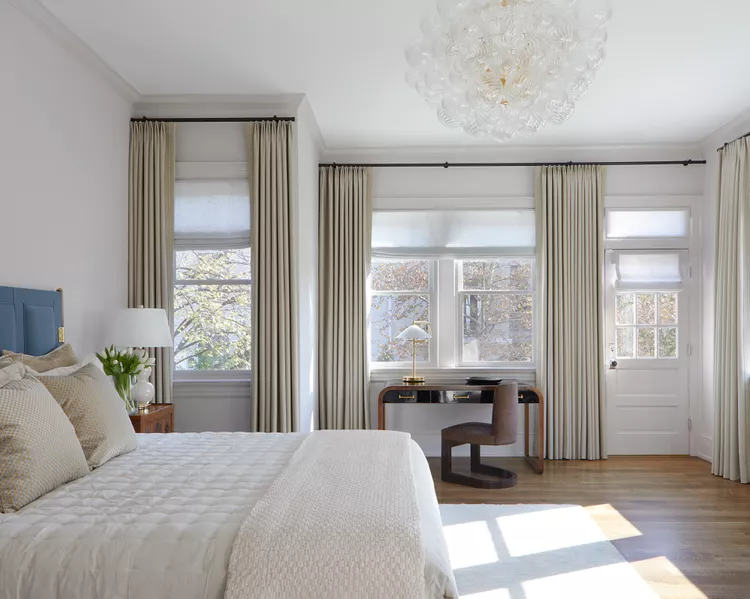
The right window treatments can help you control light as well as mute outside noise. Opt for blackout curtains or shades that can be drawn at night to block all light and create a dark, restful environment.
“If you are like me and need darkness to sleep, blackout drapes/shades are the way to go,” says Tracy Morris, founder of Tracy Morris Design. “You can purchase them ready-made or have a drapery fabricator make them for you. If you are a light sleeper like me, use a combination of blackout shades and drapes to make sure there is no chance you’ll be woken up by the sun.”
If you like a dark room to sleep in but want to wake up with the morning sun, a sheer fabric curtain, such as linen, over blackout shades might be your perfect combination.
Choose Soothing Colors
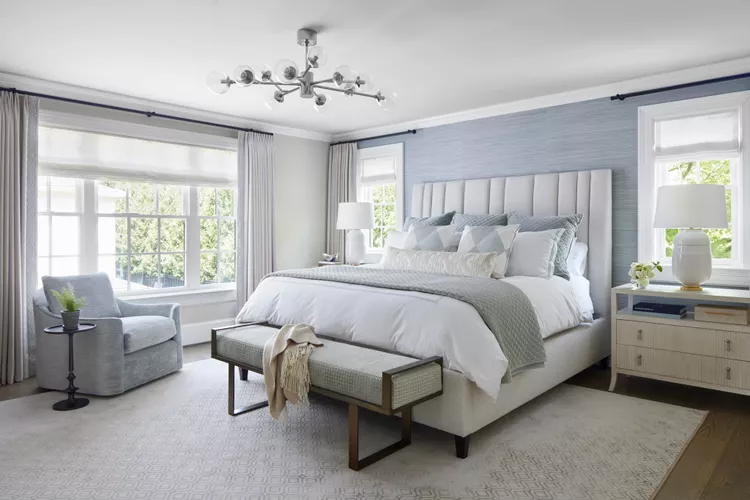
When it comes to designing a restful room, your color choices are very important. “I like the main colors to be warm but bright, with accent colors that are cool, calming, and textured,” says Morris. “Keep the colors neutral. You can add in color in your accents, but too many bold colors in your sleeping space can be jarring.” Her advice:
Paint your walls a warm neutral.
Choose a flooring color that is a medium tone. Try not to go into the extremes, not too light or too dark.
Select neutral main furniture pieces. This can include a great texture or pattern; just keep the colors neutral.
Use an accent color that feels good to your soul.
“I love using all tones of blue for my home,” says Morris.
Keep It Cool
Ideal room temperature for sleep ranges from 60 to 67 degrees Fahrenheit. “Temperature regulation in the bedroom is essential for a good night’s sleep,” says Pharis, “but preferences vary from person to person. Consider having bedrooms on their own, independent HVAC control zones. This will allow each bedroom to be set to the best temperature for the person sleeping in it.”
If the temperature in your room can’t be controlled by a dedicated thermostat, installing a ceiling fan can help keep it cool.
Make It Soundproof
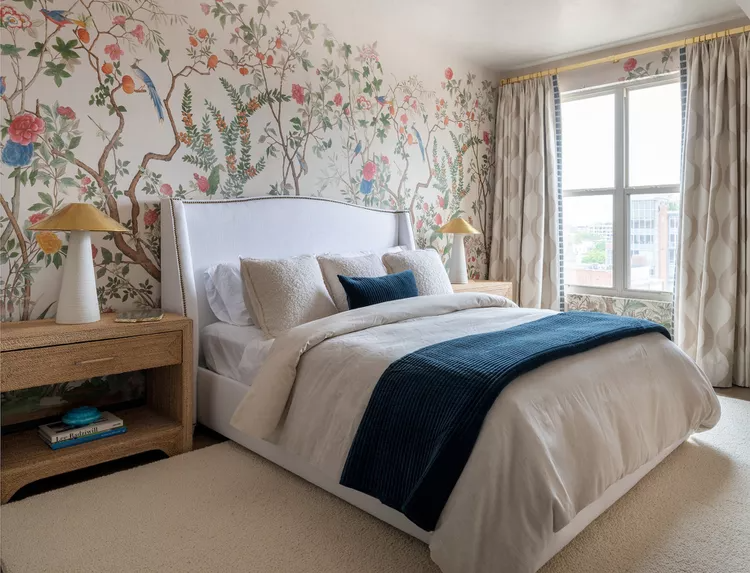
Noise is a major sleep disruptor, but soundproofing is often overlooked. “Sound design is usually the last thing people think about in interior design, but it is so important for creating a tranquil bedroom environment,” says Pharis. “There are two principle sound design concepts to consider when designing a space. The first is figuring out how to reduce the sound transmitted into a space from exterior or neighboring space.”
A solid door and quality windows will also help. Most homes built in the last two decades have double-pane windows, but triple-pane windows are available and will decrease outside noise significantly. If replacement windows are not an option, consider adding window inserts.
“The second is to make sure noise being created in a space is getting absorbed,” Pharis adds. “This can be accomplished through the use of thick curtains, rugs, or heavy bedding.” Consider adding upholstered wall panels, a tufted headboard, and plush rugs underfoot.
“When combined, both principles create a superb acoustic environment, allowing for a serene space conducive to rest and relaxation,” says Pharis.
Do a Digital Detox—by Design
Electronic devices emit blue light, which experts say interferes with sleep. So give yourself a digital curfew and cut down on screen time an hour or more before bed. It’s also best to store devices like phones, tablets, and laptops outside the bedroom.
“Designing a bedroom that supports digital detox involves creating designated areas outside the sleeping space for electronics,” says Pharis. “By incorporating concealed charging stations in nearby rooms or furniture with hidden compartments, the bedroom remains a sanctuary free from the distractions of technology.”
Levy agrees: “I recommend to our clients to have a designated charging station in the bathroom—that way the phone is close so you can hear it if you have an alarm, but not too close. But ironically, most clients like their phones on their nightstand (especially families with kids). We source smart nightstands with USB and USBC outlets in the drawers.”
Finally, be sure that any other electronics, such as a clock, air purifier, or humidifier, do not emit light.
Layer Your Bedding
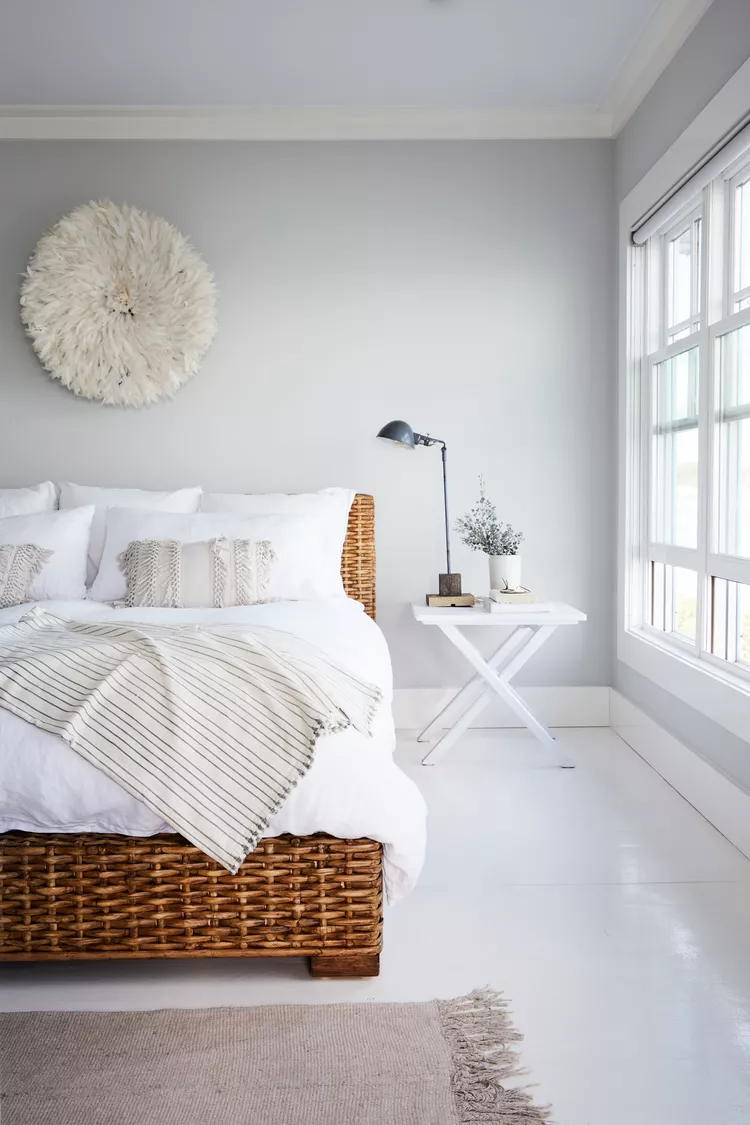
High-quality pillows and bedding are a must-have for a good night’s sleep. “High-quality luxury percale or sateen bedding that feels like a hotel is what I always recommend to our clients,” says Levy.
“The trick is to know what works best for you,” says Morris. “Know what fabrics feel good on your skin and allow you to fall asleep quickly.
The pros like to layer bedding, beginning with a crisp, high-thread-count sheet set. ” Matouk is my favorite,” says Levy. “If you are looking for budget-friendly, Pottery Barn is reliable, too.” Add a lightweight blanket during transitional seasons. Then, top it all off with a luxurious duvet or comforter. If you live in a colder climate, switch to a heavier down comforter in winter.
Finally, add a throw at the foot of the bed. “So you can use or not use as needed,” says Morris.
Find the Perfect Mattress
If you’ve addressed all these design elements but still sleep poorly, consider buying a different mattress. Visit a store where you can try out various levels of firmness. Or order online from a reputable brand that has a great return policy.
Remember, your bedroom has the potential to be your personal sleep sanctuary. Design yours in a way that promotes relaxation and restful sleep, and your body, mind, and mood will be all the better for it.